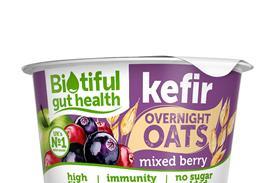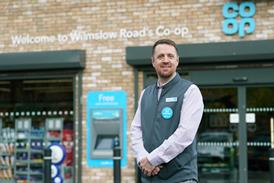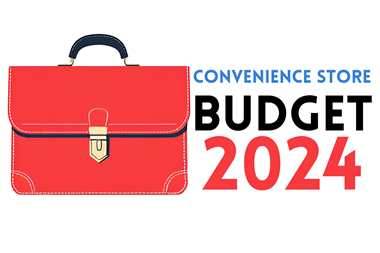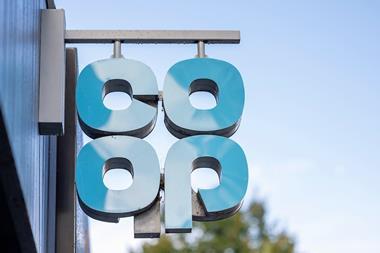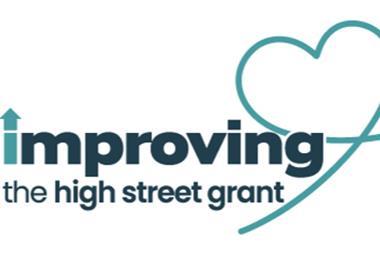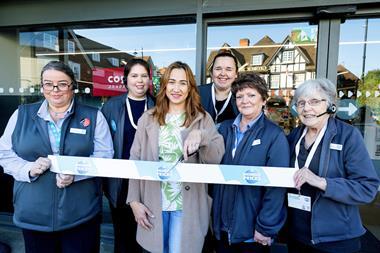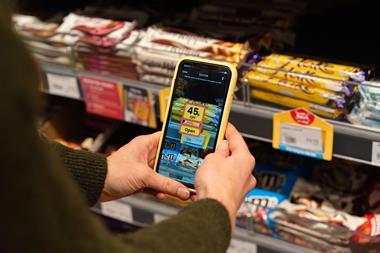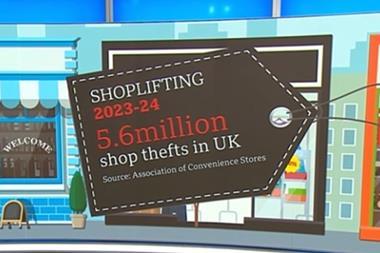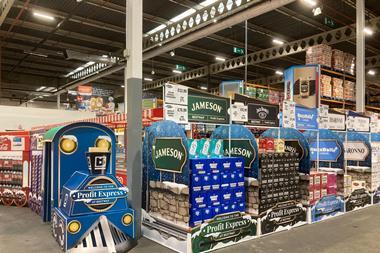There’s a lot more to product sampling than meets the eye, says Gaelle Walker. Here’s a checklist of the ingredients you need to ensure the taste of success
In these challenging trading times, the need to innovate, differentiate and communicate your ethos to shoppers has never been so important. And, as an increasing number of progressive convenience store retailers are learning, a well-executed product sampling campaign is the perfect medium through which to conjure up significant business benefits and good feeling in the process.
However, as the retailers featured here have all discovered, there is more to product sampling than cheese cubes and cocktail sticks. According to London marketing agency Hot Cow, when properly executed a product sampling campaign can result in sales uplifts of more than 300% on the day itself, and heightened sales of that particular product in the weeks and months thereafter.
Peter Swain’s Spar store in Stalybridge, Manchester, is burning proof of this. In a bid to drive awareness of its extensive beer range and kickstart sales, it offered free tasters of five of its bottled lagers. Between the sampling campaign’s hours of 4pm and 8pm, the store sold 45 ‘3 for £6’ deals worth £270, a significant uplift on the usual two to three deals normally purchased in a whole day. Sales of the deals have also improved since.
And sales increases are far from being the only benefit of a product sampling campaign, as Jason Tamplin, manager of Budgens Wells, attests. Last summer Jason and his team held weekly tasting days in partnership with both national and local suppliers. As Jason explains: “Our tasting days give us the chance to talk to our customers and get a better understanding of what they are looking for from us. It’s a great way of gathering information which helps us improve our business.”
Case study
Spar retailer Howard Toms saw a huge sales uplift after staging an Italian wine tasting evening in his Portsmouth store.
The store was decorated in red, white and green, and a wine tasting table with nibbles set up.
A marketing campaign ensured that customers were aware of the sampling, and wine sales on the evening were up 74%.
“It’s events like this that put us above the multiples. I have had great feedback about the day,” Howard says.
These days, data really is king, and any additional information that you can harness about your shoppers’ needs, habits, likes and dislikes can give you a crucial advantage over your competitors.
So, where to start? Obviously, the product is key. As Nisa retailer Chris Taylor says, any product can be sampled so long as it suits your customer demographic. “There is little point in running a sampling campaign for an expensive bottle of wine if the best-selling product in the store is from the lower price point,” he points out.
His store, Taylor’s of Tickhill in Doncaster, recently held its annual food and wine tasting event, which resulted in two weeks-worth of sales being taken in just one evening. “This turned a 52-week year into 54, something which is extremely important in this current economic climate,” he adds.
However, as Chris attests, sampling events like this don’t happen overnight. Whether you are planning a one-off day to sample a new range from a big brand, or a month-long campaign to sample goods from local producers, planning is paramount.
Hot Cow’s Sally Durcan believes that many brands and retailers don’t always get tastings right. “Sometimes it is due to a lack of knowledge of the product or their shopper profile other times it is simply a failure to plan, or ineffective monitoring and measurement.”
Dates, times, location, display, staff training and stock availability are all crucial if you don’t want your event to flop.
According to marketing expert Stephanie Rice, Fridays are most conducive to holding sampling sessions, and the hours between 10am and 2pm are the most favourable.
Publicity is also key. All of the retailers who C-Store spoke to had taken the time to publicise their sampling campaigns locally and in-store via posters and newsletters, in every case seeing a return on their investment.
And if, like Jason, you take a partnership approach to your event, you can also keep down the costs of any marketing materials.
The cost of printing his 5,000 consumer leaflets was covered by his tasting day suppliers, in return for including their logos on the printed material.
“I believe the leaflets played a major part in the success of our tasting days as people were aware of what was happening. In fact, on some days we even had customers queuing to get a taste of certain products,” he says.
So, you know what you want to sample, when you’re going to do it, and you’ve told your customers. The next thing to consider is how the whole thing is going to look. Just as attractive wicker baskets can do wonders to improve the appearance of fresh fruit and vegetable displays, chunky wooden chopping boards, pretty coloured platters and crisp tablecloths will help to build an eye-catching display. Added extras such as a plump bunch of grapes and some hot crusty bread alongside some cheese to be sampled will also help pack an even bigger punch.
The other key benefit of partnering with suppliers is that they will probably have their own ideas of how the display should look. You might even find that they are happy to do the whole thing themselves, saving you any wastage and extra staffing costs.
In addition to a dedicated member of staff who holds local product sampling campaigns in his three Cotswold Budgens stores, retailer Guy Warner is happy to allow suppliers to set up their own sampling stations. On the day C-Store visited his Moreton-in-Marsh store, new supplier G’nosh was exhibiting its range of gourmet dips, and customers were only too pleased to have a try.
Giving local or small suppliers a presence in store is also a great way of showing customers that yours is a business that cares about and supports local enterprise.
Kent retailer Binny Amin is taking things even further at his Budgens store in Whitstable. His latest product sampling campaign will feature local produce being cooked in-store by the local catering college. “The plan will benefit everyone involved. We’ll get our fantastic local products promoted to shoppers they’ll enjoy a pleasant experience and the pupils get the cookery experience and publicity that they need. It’s win, win, win,” he says.
Whether you decide to work with suppliers, or run the sampling session in-house, bear in mind that strict health and safety guidelines must be adhered to (see panel, p24). The presentation of samples, the sampling station, and staff running it are of paramount importance. Staff must be capable of preparing dishes that not only meet health and safety requirements, but also look inviting.
According to recent research by Hot Cow, 71% of consumers will try a product if you grab their attention with something visually appealing. In addition, almost 60% of people are more likely to stop and accept a sample if it is being handed out by approachable and attractive people.
How your staff stand, speak and behave can have a huge impact, explains Christine Knott, managing director of retail training provider Beyond The Box. “When trying to convince a customer to buy a product, staff need to use open body language, a warm and welcoming smile, and ask open-ended questions.”
Positioning the sampling station at the front of the store will give staff more space to move and means that they are ideally placed to see and greet each person that enters the store.
Their knowledge of the product also needs to be tip-top, so some homework may be required if they are not working alongside a supplier. Where the product was made, how much it costs, what it contains and how it can be cooked and stored are all questions that staff must know the answers to.
Knott also believes that what you say to customers can make a huge difference. “When addressing shoppers, always say ‘come and try’ as opposed to ‘do you want to try’ as the latter will usually result in a no,” advises Knott. “A friendly command is much more likely to get the customer to try, and always compliment the product. For example, ‘Try one of these, they are amazing!’.
“A great tip is to always ensure the atmosphere is light-hearted humour the customer, and be open to poking fun at yourself in order to relax and engage with them, for example, dressing up in costume when sampling the product.”
However, it’s also important to know when no means no. “If they are clearly not in the mood then always leave them alone. A sampler should never be pushy or ‘over-sell’ a product, and they should always let the customer talk and ask questions,” Knott adds.
“It’s important that sampling events don’t feel like sales pitches as that can have the opposite effect and really turn shoppers off,” adds Binny. “It’s about being social.”
Money-off coupons and other promotional mechanisms are a great way of making the sampling a financial success. However, there are a few pitfalls to avoid if you don’t want to become a victim of your own success.
“A well-executed campaign can generate an increase of between 300% and 500% in sales of that particular product, so you have to plan for this and make sure that you have enough stock,” explains Hot Cow’s Durcan. “I’ve heard of so many cases where stores didn’t correctly plan for the rise in demand and shoppers were left angry because they couldn’t purchase the product on offer. You need to ensure that you monitor availability closely on the day of the sampling, and the days following it.
“Also, make sure that the product is easy for shoppers to find in store. If a shopper heads to the confectionery aisle to buy a particular chocolate bar that you were promoting, but can’t find it there because it’s displayed on a separate gondola end, you risk frustrating them.”
Sampling is undoubtedly a great way to increase sales and customer loyalty, provided you approach it in a logical manner. As Jason says: “Sampling campaigns not only spice up your customers’ shopping experience, but by making people stop for a few minutes, it also provides a good chance to talk to your customers.” Sounds like an opportunity too tempting to miss.•
Dos and Don’ts
● Pay attention to hygiene. Wash hands thoroughly and tie hair back when preparing or offering food for sampling. Do not allow anyone to handle food if they are suffering from, or carrying, a disease likely to be transmitted through food, or a visible infection
● All raw produce must be washed thoroughly
● Cold food on display can only be out of temperature control for a maximum of four hours, after which it must be discarded
● Hot foods can be kept below 63°C for up to two hours. Any food left after this should be thrown away, reheated to 63°C or above, or cooled quickly to 8°C or below. You should only do this once
● Be aware of any potential allergens in samples
● Responsible retailing regulations apply to sampling. Check ID and do not offer alcohol to under 18s






